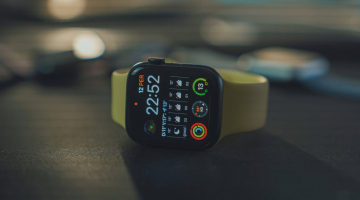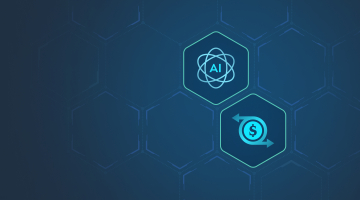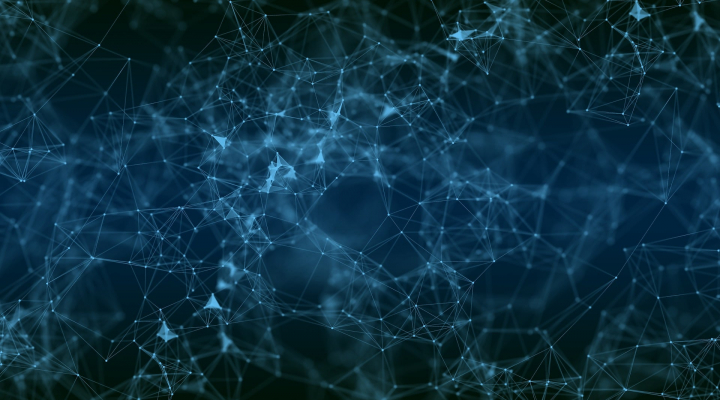AI-based image recognition: Main advantages and real examples
Ours is the age of artificial intelligence. According to Statista, this year, its market size is expected to reach $184 billion, and it is likely to grow almost 4.5 times by 2030, manifesting a stunning CAGR of 28.46%. Such astounding numbers are the best proof that this disruptive know-how is leveraged in multiple industries, where it finds dozens, if not hundreds, of applications. One of its most popular use cases is AI image recognition technology, which is revolutionizing numerous shop floor processes in various sectors of the economy.
This article will clarify the essence of AI-powered visual recognition and image processing, explain the nitty-gritty of image recognition systems’ operation, expose the typical image recognition tasks in different industries, pinpoint major inference models of AI for image recognition, and zoom in on image recognition algorithms utilized in this sphere.
Looking for computer vision expertise? Check out our services.
AI-based image recognition made plain
Image recognition (synonymous terms picture recognition and photo recognition) is a sub-domain of computer vision. The latter technology employs computer vision applications or computer vision APIs to handle various tasks related to gathering and organizing image data, localizing each object captured by digital cameras, implementing image enhancement, providing event detection, and more.
Image recognition software has a narrower focus and specializes in image identification and analysis with the subsequent image classification across certain categories and image labeling in accordance with selected properties. As a rule, such computer vision systems are honed to classify digital images based on persons, objects, places, or logos they contain.
Like any other AI-driven technology, picture recognition is experiencing a boom, with the market size exceeding $46 billion, which will more than double by the end of the decade.
Such a spike is explained by the gradual sophistication of visual content processing mechanisms employed in image recognition models. Let’s find out how they operate.
How does AI image recognition work?
Traditionally, the recognition of visual data by a machine was performed in the course of a computer vision pipeline that consists of image filtering, segmentation, feature extraction, and rule-base classification of visual inputs. Solutions that utilized this conventional image analysis model yielded adequate outcomes, but at what cost?
Building such pipelines takes quite a time (because of the necessity for manual parameter adjustment) and requires in-depth image processing expertise to be applied for their development and testing. Besides, being created for certain scenarios and locations, this pixel-based model performance was poor when employed in other circumstances. Its scalability potential turned out to be very limited, too.
The advent of AI models has elevated this routine to a new level. Since artificial intelligence simulates the functioning of the human mind, it is natural that it should move along the same lines to analyze images. When we see something, we not only recognize objects around us and associate them with proper definitions. We can recognize patterns in mentally labeled images and videos and learn from past experiences.
Cutting-edge machine learning models (deep learning models, to be precise) approach object recognition similarly. The existing systems leveraged for image recognition rely on multi-layered neural networks that learn from vast datasets to identify objects as different instances and categorize them. The model training data contains both positive and negative samples with complex features, allowing its object detection algorithms to perform matching of similar images with greater precision and ever-increasing efficiency as such AI vision systems continue to learn.
What techniques do AI-fueled image recognition solutions utilize?
AI image recognition algorithms
As vetted experts in computer vision, DICEUS specialists employ the following deep learning algorithms in their products.
Convolution Neural Network (CNN)
It consists of four layers. The convolution layer is responsible for navigating the image, while its filter calculates pixels in it and forms a feature map. Next, the relu layer comes into the play, setting the negative values in the analyzed data to zero. In the pooling layer, the number of parameters is diminished, leaving only the most critical features active. Finally, the flattening layer transforms the results into a single vector, which is entered into the network via neurons.
This general model has several variations. Region-based CNN (or R-CNN) starts its operation by dividing the image into several thousand regions, after which CNN is applied to each. The main drawback of this algorithm (its lengthy training time – about 84 hours) was addressed in Fast R-CNN algorithms that reverse the order of operation, where splitting the picture into regions is implemented after the CNN application. Further elaboration of this algorithm yielded Faster R-CNN, where the nine hours of the previous model’s training time and its 2+ seconds for producing the result were further reduced, allowing the system to deliver the outcome in just 0.3 seconds.
Single Shot Detector (SSD)
While CNN-driven picture image recognition systems can draw overlapping boxes around image elements, SSD deals with this problem by dividing the image into default bounding boxes. Thus, a grid is created that allows the system to process the image at different aspect ratios and handle objects varying in size. Such algorithms are very fast (125 ms for image processing), accurate, flexible, and foolproof in training.
You Only Look Once (YOLO)
This algorithm employs a confidence metric and a fixed grid size with multiple bounding boxes to process the picture only once and determine whether there is an image within the grid. This approach’s evident asset is its fantastic speed, which is somewhat offset by its subpar accuracy since the mechanism doesn’t dig into details concerning multiple aspect ratios but captures only key features.
As a rule, one image recognition product has a single algorithm at its core, but custom models developed for bespoke systems can combine several algorithms to enhance their efficiency. Each of these algorithms can be leveraged to power various inference AI image recognition models.
AI-based image recognition inference models
There are four basic inference models employed in the domain of picture recognition.
- Detecting objects, people, and vehicles. As you can guess, this model is trained to recognize things, logos, people, and cars across visual media and live video streams, helping monitor people’s behavior at work or control traffic jams and congestion on streets and in open spaces.
- Detecting human posture and skeletal structure. Such models scan information about various parts of the human body (head, neck, hands, and more) and their connections, joint positions, and angles to understand body movements and postures during photo and video analysis. They have a wide scope of applications, ranging from gesture recognition and fitness tracking to anticipating behavioral intent and biomechanics research.
- Facial recognition. It focuses only on one body part, however this model should possess a great precision since it has to consider various minute details related to facial features (nose, eyes, mouth, etc.) and patterns. Used in authentication and security systems, these face detection models compare the images they capture with the previously recorded database of image recognition examples to identify the person, their gender, age, ethnicity, emotions, etc. A special use case of this technology became relevant during the global pandemic, helping specialists register people’s temperature in thermal scans from video feeds.
- Analyzing medical images. These models are employed for MRI or CT medical image analysis. Similar to the previous type, they compare the input pictures with the facility’s database to detect anomalies (such as tumors) and identify sick areas and disease patterns.
What practical applications do these inference models (or their combinations) find in real-world situations?
Zooming in on AI image recognition use cases
Today, AI image recognition technology is employed across multiple industries by organizations in their pipeline routines.
Healthcare
Diagnostics is the major medical activity revolutionized by AI picture recognition. AI-powered tools help physicians accurately detect and classify abnormalities in CT scans, X-rays, MRIs, and other medical imaging, monitor disease development, and assess treatment responses. As a result, medical care efficiency increases manifold.
Also, food image recognition technology can perform dietary assessments and improve the accuracy of calorie intake by analyzing the pictures of food people make before consuming it.
Manufacturing
Here, defect detection and quality control benefit the most. Image recognition techniques are utilized to identify flaws in items a company manufactures or corrosion in its equipment, minimize production errors, monitor adherence to quality standards, and perform predictive maintenance.
Retail and e-commerce
In this field, AI image recognition reigns supreme in workflow optimization and enhancing customer experience. For instance, employees can employ this technology for inventory management and automated stock tracking. Labeled data generated in this way is utilized by shoppers in their visual product search and virtual try-on, facilitating personalized recommendations driven by customer preferences.
Security and surveillance
State-of-the-art software powering modern security cameras cannot function without object (especially weapon) detection, facial recognition, and anomaly identification. Thanks to these, personnel receive real-time alerts in critical situations and can react promptly to security challenges. Besides, reports from surveillance cameras processed with the help of image recognition mechanisms are utilized in crime prevention and investigation.
Another security use case of AI image recognition is related to biometric authentication mechanisms (face, retina, and fingerprint ID), which are leveraged in computers and mobile devices to ensure the gadget is operated by an authorized person and prevent system compromise and data burglary.
Automotive
With the advent of autonomous vehicles, image recognition becomes indispensable for the driverless car to detect surrounding objects, pedestrians, lane markings, road signs, traffic lights, etc. But even if there is a human behind the wheel, advanced driver assistant systems (ADAS) equipped with image recognition tools help people avoid collisions, keep their lanes, and exercise effective navigation and cruise control.
Beauty industry
No, it’s not about face recognition algorithms detecting the perceived attractiveness of beauty pageant contestants (although resources like Beauty.ai can do it by analyzing people’s facial symmetry, wrinkles, skin tone, age group, etc.). More practical yet is the assistance of this technology in online beauty products shopping. Consumers can upload their photo, have it processed by AI facial recognition algorithms, and obtain a try-on option or individualized expert advice concerning the most suitable cosmetics or skincare items before buying them.
Agriculture
In this industry, picture recognition is utilized primarily for crop management and monitoring, ushering in precision farming and promoting resource optimization. Pictures are supplied by drones with mounted cameras, which machine learning models process to control crop health, detect diseases, and fine-tune irrigation strategies. Livestock and farm animals can be monitored much along the same lines.
Environment monitoring
Contemporary research and nature management are impossible without this cutting-edge know-how. Picture recognition algorithms help monitor wildlife populations by determining lifeforms and species of plants and animals captured by satellite or drone imagery. They are also instrumental in tracking deforestation, assessing landscape changes, detecting oil leaks, understanding animal behavior, and more.
Social media
Here, the technology benefits both users and administrators. The former can upload pictures containing multiple people, and the AI-powered system will recognize their friends on them and suggest tagging them. The latter can detect and flag inappropriate content. Then, based on the degree of offense, the perpetrator either receives a warning or has their account suspended for a certain period.
You can maximize the value of AI-powered image recognition software by entrusting its development to a competent vendor.
DICEUS expertise with AI for image recognition in insurance
Seasoned professionals of DICEUS excel at integrating AI image recognition capability into the insurance solutions we offer. The Vitaminise mobile app we have developed leverages picture recognition models that streamline and facilitate the inspection of damaged property (especially vehicles), determine the extent and type of damage, combat fraud during underwriting, and reduce the need for human personnel intervention, thus accelerating claims processing and more.
Our developers are well-versed in implementing AI image recognition in insurance products. They can use this experience to build AI-powered computer vision solutions across multiple industries and use cases. Contact us to obtain top-notch software of any scope and complexity that leverages the power of AI to bring business value to your organization.
Final thoughts
The power of AI spreads across an ever-growing number of technologies, including image recognition. Formerly, visual data filtering, segmentation, feature extraction, and classification relied on computer vision pipelines, which required adequate technical expertise and were time- and effort-consuming. The advent of AI-driven image recognition has revolutionized the field, enabling state-of-the-art deep learning models to accelerate image processing drastically, generate more accurate results, and continuously enhance their capabilities, becoming more sophisticated along the way.
AI picture recognition software leverages unique algorithms (CNN with its upgraded variants, SSD, or YOLO), which allow the system to detect objects, vehicles, and people with their body parts, postures, and skeletal structures on photos, videos, or medical imagery. The industries that benefit from AI image recognition solutions include healthcare, e-commerce, manufacturing, security, automotive, beauty, agriculture, social media, and more.
To maximize your company’s use of AI-fueled image recognition software, hire qualified professionals in the niche who will deliver a high-end product within time and budget.
Frequently asked questions
What are the key benefits of AI-based image recognition?
Thanks to AI-fueled image recognition models, specialists can quickly and accurately detect diseases, identify wrong-doers, limit access to people’s devices, monitor the state of plants and animals, track patient conditions, streamline inventory management, handle road congestion issues, anticipate people’s behavior, understand consumer emotions, and more.
What industries have already adopted AI image recognition?
AI recognition algorithms and inference models are making a robust advent into numerous modern domains, including healthcare, automotive, retail, hospitality, agriculture, security, manufacturing, sports and fitness, environmental protection, public administration, and others. This list is constantly growing as companies across other fields embrace the technology in their shop floor processes.
What are the challenges of implementing AI image recognition?
To maximize the efficiency of an AI image recognition solution, you should ensure the availability of sufficient volumes of data for algorithm training, overcome variability in images (lighting, viewpoint, occlusion, background clutter, and other factors), and handle ethical considerations related to using AI (fairness and bias concerns, transparency and accountability of AI mechanisms, and data privacy).





